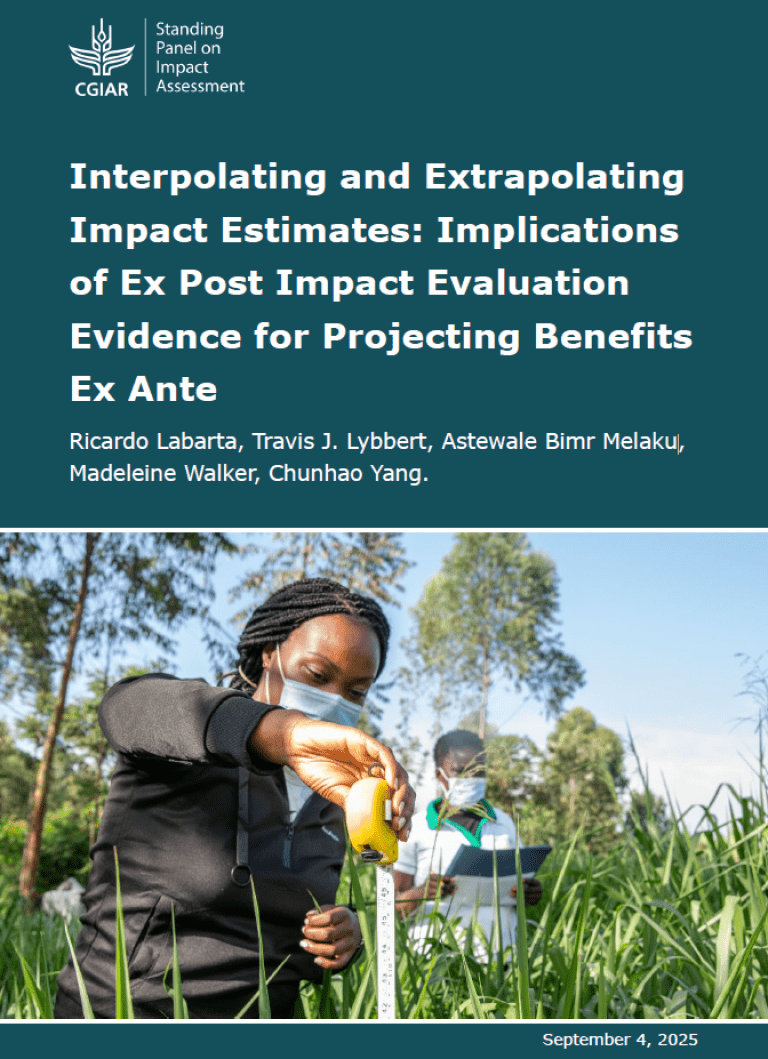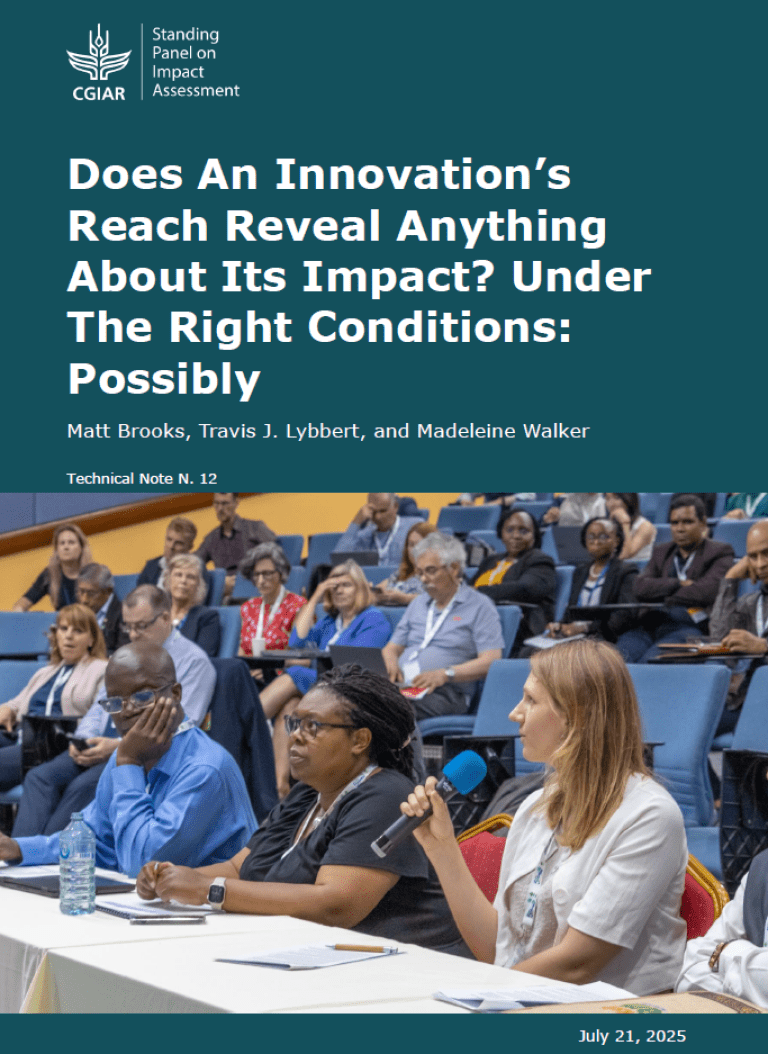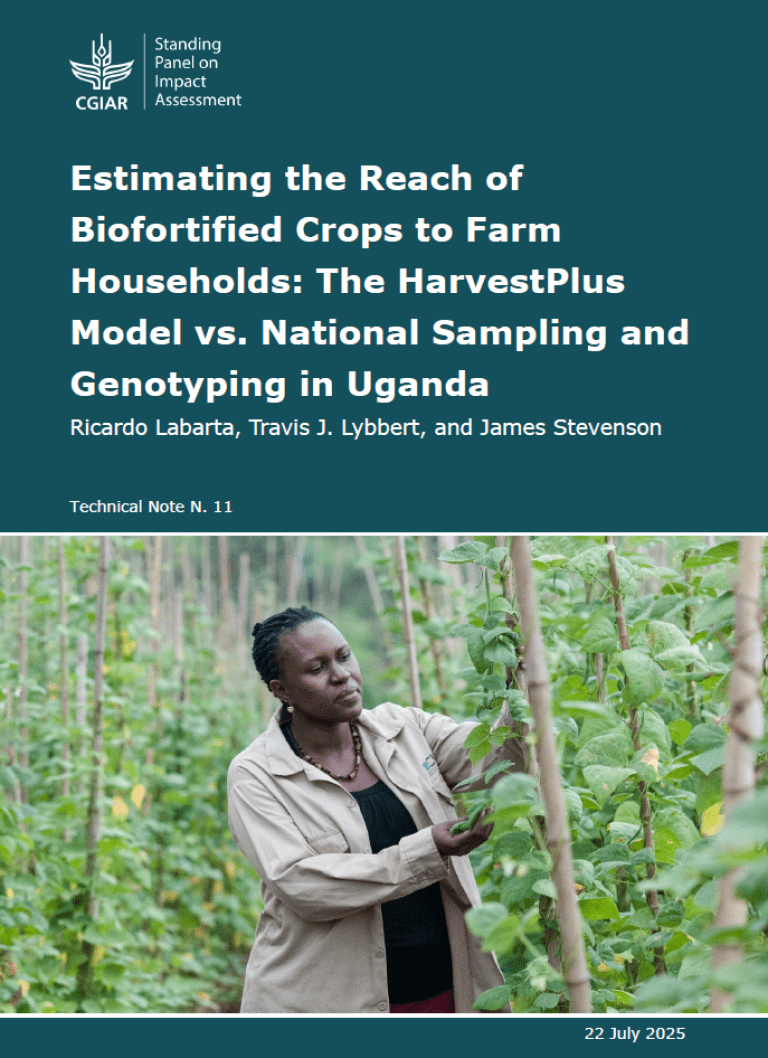On March 7th the World Bank LSMS-ISA, the Uganda Bureau of Statistics (UBOS), Uganda’s National Agricultural Research Organization (NARO), and CGIAR Standing Panel on Impact Assessment (SPIA), launched its third country study report (following Ethiopia and Vietnam INSERT CROSS-LINKS). The report, SPIA Uganda study 2025: Agricultural Diversity Under Stress, features the whole range of agricultural innovations in Uganda. One unique feature is the inclusion of DNA fingerprinting of plant samples from six crops maize, cassava, banana, beans, sweet potato and groundnut.
READ HERE: SPIA Brief: Uganda Report 2025 - Agricultural Diversity Under Stress
Introducing the launch event was Dr. John Ilukor, economist at the World Bank, emphasizing the importance of the evidence for Ugandan agricultural policy-making. Dr. Patience Rwamigisa, from the Ministry of Agriculture, Animal Industry and Fisheries (MAAIF), expressed that the relevance of these results would serve to talk about some areas of priority such as livestock diseases, food security, supporting the export of specific commodities, and better understanding of seed distribution. Prof. Travis Lybbert, SPIA’s chair, added that besides this purpose, SPIA’s team of experts works to both “celebrate success but also learn from disappointment”.
Setting the ground for the discussion, Dr. James Stevenson started with a general overview of the country studies, stressing the importance of the collaborators and the research network that carried out this work, and that will sustain it in future, emphasizing how special it is that Uganda has shown such commitment to understanding its own agricultural landscape.
This was followed by Prof. Karen Macours’ presentation of the SPIA Uganda Report 2025: Agricultural Diversity Under Stress, not before mentioning her gratitude for being in Uganda again, and recognizing the many years of research partnership that made the report possible.
Her presentation illustrated the adoption results for different agricultural innovations, including crops, livestock, agroforestry, and institutional innovations. The message of the report is very mixed, with some successes (improved varieties of maize, groundnut, cassava) being offset by disappointments with low adoption of other innovations. She also addressed the challenges of measuring the impact of Agricultural Research for Development (AR4D), highlighting the importance of understanding Uganda’s unique context and the constraints posed by climate change and institutional factors. The presentation underscored the significance of rigorous data collection methods (see more section 3 of the SPIA Uganda Report 2025 - First Version -), while also acknowledging sampling limitations imposed when working in the confines of a national survey run by the statistical agency rather than by researchers. Despite the mixed and sometimes disappointing results highlighted, the report opens a window of opportunity for Ugandan policy makers to help update their thinking about the current effectiveness of Ugandan extension and seed systems.
The event concluded with a remarkable panel of experts from NARO, MAAIF, Uganda Development Cooperation, AGRA, and the Ministry of Finance – expertly moderated by Prof. Paul Kibwika from Makerere University. The discussions focused on Uganda’s agricultural challenges and opportunities, on seed availability, scaling technologies, investment priorities, and the use of evidence in informing policy. The panel discussion underscored the complexity of Uganda’s agricultural sector. While significant progress has been made in agricultural technology, investment, and national collaboration, questions remain regarding scaling adoption, aligning funding with market needs, and addressing institutional gaps. Strengthening seed systems, improving investment strategies, and fostering resilient agricultural policies will be critical steps in ensuring sustainable agricultural growth in Uganda.
Key Takeaways from the Panel
- Dr. Patience Rwamigisa from the Ministry of Agriculture, Animal Industry, and Fisheries (MAAIF) emphasized the importance of reforms, particularly the availability of new seed companies. While demand is high, supply remains low, meaning that although farmers are receiving advanced technology, the scale of adoption still represents a challenge.
- Dr. Godfrey Asea highlighted the need for stronger national collaboration to effectively disseminate agricultural innovations. While 35 maize varieties are currently active with farmers, the key constraint lies in scaling their use further. He noted the surprisingly low results for sweet potatoes and bananas, whereas cassava adoption has been given some impetus as farmers were compelled to seek alternatives planting material following extensive disease pressure.
- Mrs. Rosette Nayenga raised an important question about how government prioritization of commodities translates into investment areas. She noted that as Uganda’s income levels rise, consumer preferences are shifting. More farmers are diversifying into crops like onions and oil palm, which require time and investment. She expressed concerns about the agricultural breeding system, arguing that it may not be investing in the right crops that align with market needs.
- On funding priorities from the Ministry of Finance, Ministry representatives shared that they collaborated with the National Agricultural Research Organization (NARO) to conduct impact evaluations. These evaluations focus on household-level effects, national-level productivity, exports, gender equity, and overall economic outcomes to ensure resources are allocated effectively.
- Mr. David Wozemba (AGRA) addressed institutional weaknesses, particularly in the seed system. He stressed that agricultural development requires a holistic approach, defining theories of change (ToC) that lead to sustainable impact. However, he pointed out that investments often fall short due to systemic limitations. One major concern is that stakeholders tend to “drop the ball,” failing to sustain long-term investments in seed systems. Issues such as seed classification and consistent funding remain key barriers to success.
Prof. Karen Macours provided valuable insights into the complexities of attributing agricultural innovations solely to CGIAR (CG). She emphasized that while CG plays a key role, national and international collaborations have also contributed significantly. Given SPIA’s mandate, referring to these innovations as "CGIAR-related" is a more accurate framing. She acknowledged the diversity among countries but highlighted emerging common patterns in perceptions and innovation scaling. Ideally, further evidence will shed more light on these trends.
Speaking in her academic capacity, she challenged the notion of framing this as a simple supply-or-demand issue. While improved seeds aim to increase yields, their benefits may not always be immediately apparent to farmers, particularly when disease risks are involved. This raises important considerations about the broader objectives of scaling—should the focus shift from yield increases to yield stabilization? Finally, she pointed out that private demand for these innovations might be imperfect due to the unobservable nature of certain benefits. Nonetheless, addressing hidden hunger remains a priority, reinforcing the need for continued efforts in agricultural innovation and policy.


